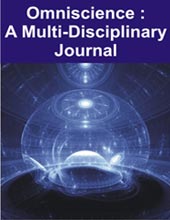
Iyanda Kamoru

Umoize Stanley
- Senior Lecturer Department of History and International Studies, Federal University, Gashua Yobe State Yobe State Nigeria.
- Research Scholar Department of history, University of Benin, Benin, Edo State Nigeria
Abstract
The objective of this work is to study the urbanization of Ejigbo from 1914 to 1976 AD. A multi-disciplinary approach had been used in writing this thesis. Oral information was extensively used in cross checking written data. The rise of urban centres was an important factor of social life in colonial Nigeria. Before colonial rule, a number of urban centres existed in Nigeria, especially in the areas that make up northern and western Nigeria. Thus, some urban centres in colonial Nigeria were expansions of pre-colonial ones. A few positive effects of urbanization in colonial Ejigbo can be identified. Urban life brought Ejigbo people of different cultures and backgrounds together. They engaged in many mutually lucrative activities in the fields of commerce, industry and so on. In this sense, urbanization was a source of integration in Ejigbo. This integration even included marital links. Lasting friendships were developed among people of Ejigbo and these proved helpful to the integration efforts. Urbanization also encouraged the emergence and growth of institutions and practices that were totally alien to Ejigbo Town. The local government of Ejigbo aims to boost economic development through industrialization, likely leading to increased urbanization. Urban centers in Ejigbo are crucial for economic growth, necessitating a well-defined urbanization policy. This policy should focus on regional economic planning, utilizing provincial boundaries for organization. Additionally, towns should be classified based on revenue capacity to determine their autonomy and developmental responsibilities. Data collection and investment in infrastructure are also imperative for effective urban planning. Furthermore, Ejigbo’s historical significance and its role as a hub for the Muslim community underscore the need for inclusive development strategies.
Keywords: Colonial rule, culture, urbanization, integration, population, development of ejigbo town
[This article belongs to Omni Science: A Multi-disciplinary Journal(osmj)]
References
- Berry BJ. Urbanization. Urban ecology: an international perspective on the interaction between humans and nature. 2008:25-48.
- Mabogunje AL. Urbanization in Nigeria. A constraint on economic development. Economic Development and Cultural Change. 1965 Jul 1;13(4, Part 1):413-38.
- Emezi HO. Nigerian Population and Urbanization, 1911-1974: A Bibliography.
- Williams D, Anene JC, Brown GN. Africa in the Nineteenth and Twentieth Centuries.
- Harvey D. Social processes and spatial form: an analysis of the conceptual problems of urban planning. InPapers of the Regional Science Association 1970 Dec (Vol. 25, No. 1, pp. 46-69). Berlin/Heidelberg: Springer-Verlag.
- Clark D. Interdependent urbanization in an urban world: an historical overview. Geographical Journal. 1998 Mar 1:85-95.
- Short JR. An introduction to urban geography. Routledge; 2017 Oct 12.
- O’Connor A. The African City. Routledge; 2013 Jan 11.
- Gottdiener M, Hohle R, King C. The new urban sociology. Routledge; 2019 May 17.
- Emezi HO. Nigerian Population and Urbanization, 1911-1974: A Bibliography.
- Lewis R. yT Bibliographical Studies, Vol. 6. Edited by TW Freeman. London: Mansell, 1982. 156 pp. 21-5 x 275 cm. np ISBN 07201 16643. Looks at twenty.

Omni Science: A Multi-disciplinary Journal
| Volume | 14 |
| Issue | 02 |
| Received | January 31, 2024 |
| Accepted | February 22, 2024 |
| Published | May 17, 2024 |

